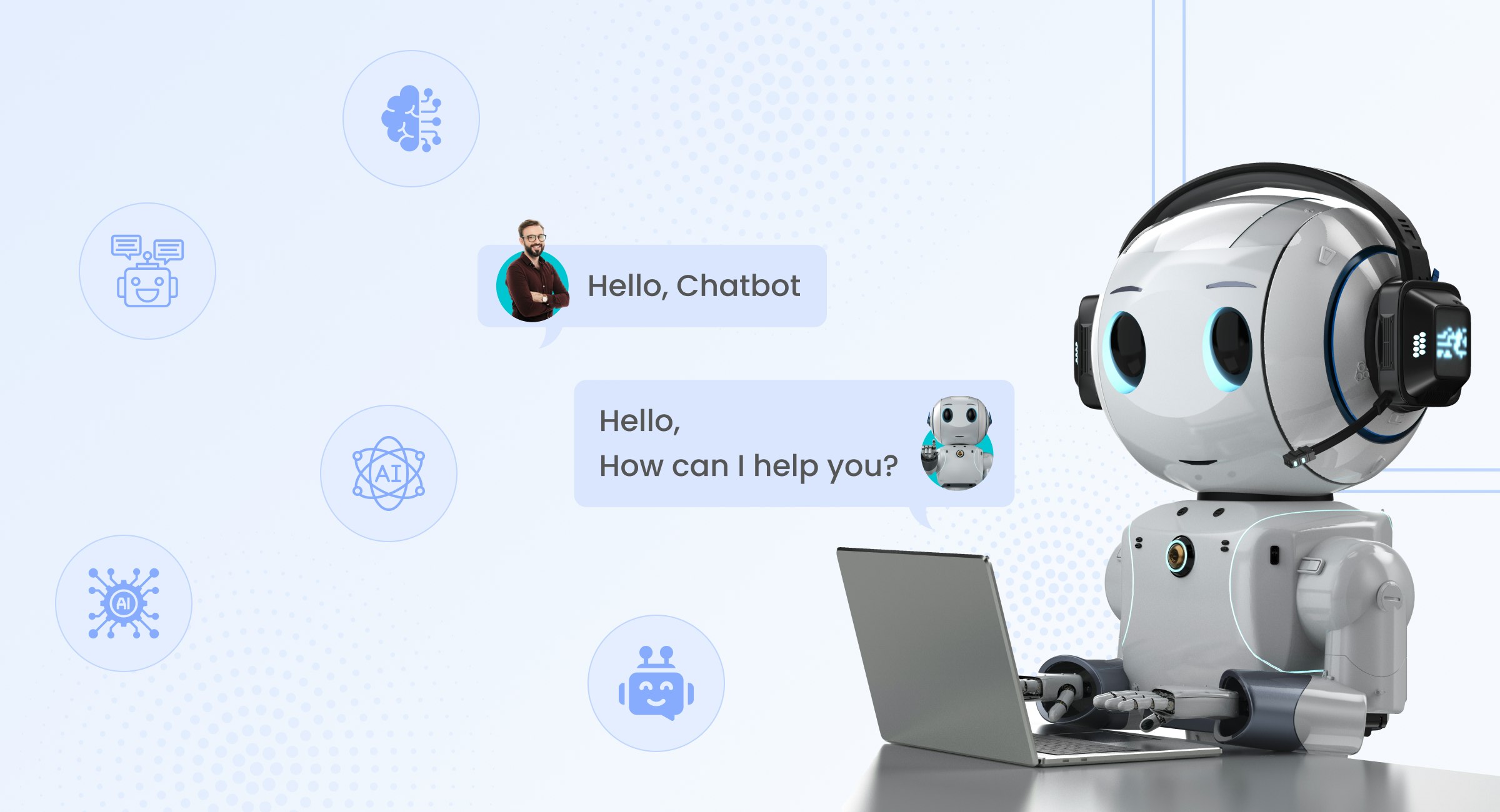Guide to Chatbot Development
1. What is a Chatbot?
A chatbot is a software application designed to simulate human conversation through text or voice interactions. It can interact with users in a conversational manner, answering questions and performing tasks based on predefined rules or advanced AI algorithms.
Types of Chatbots:
- Rule-Based Chatbots: Follow predefined rules and decision trees. They handle specific commands or keywords and follow a structured interaction path.
- AI-Based Chatbots: Use machine learning and natural language processing (NLP) to understand and respond to user inputs more flexibly and contextually.
2. Importance of Chatbots
- 24/7 Availability: Provide round-the-clock support, ensuring users receive assistance anytime.
- Cost-Effective: Automate repetitive tasks, reducing the need for extensive customer support teams.
- Enhanced User Experience: Deliver quick and efficient responses, boosting user satisfaction and engagement.
- Scalability: Manage a high volume of interactions simultaneously, facilitating growth and efficiency.
- Data Collection: Collect valuable user insights to improve products, services, and overall user experience.
3. Process to Develop a Chatbot
Step 1: Define Objectives and Scope
- Purpose: Determine what the chatbot will achieve, such as answering FAQs, booking appointments, or providing product recommendations.
- Scope: Outline the functionalities the chatbot will cover and identify any limitations.
Step 2: Choose Technology and Tools
- Platform: Decide where the chatbot will be deployed (e.g., website, mobile app, social media).
- Development Approach: Choose between rule-based or AI-based chatbots.
- Tools and Frameworks: Select appropriate tools for development, such as Dialogflow, Rasa, or Microsoft Bot Framework.
Step 3: Design the Conversation Flow
- Intents: Define user goals (e.g., checking order status, finding product information).
- Entities: Identify key pieces of information needed (e.g., order number, product name).
- Conversation Flow: Create a flowchart or storyboard to map out user interactions and chatbot responses.
Step 4: Develop the Chatbot
- Setup: Prepare the development environment and integrate necessary tools.
- Implementation:
- Rule-Based: Configure decision trees and response rules.
- AI-Based: Train the model with sample data to recognize intents and extract entities.
- Integration: Connect the chatbot with APIs or databases if needed.
Step 5: Test the Chatbot
- Unit Testing: Test individual components and functionalities.
- User Testing: Deploy to a test group and gather feedback on performance and usability.
- Iteration: Refine the chatbot based on testing results and feedback.
Step 6: Deploy and Monitor
- Deployment: Launch the chatbot on the selected platform.
- Monitoring: Track performance metrics like user interactions, response accuracy, and error rates.
- Continuous Improvement: Update the chatbot with new features and improvements based on performance data and user feedback.
4. Examples of Suitable Chatbot Topics
- Customer Support:
- Purpose: Assist with common customer queries, handle complaints, and offer support.
- Example: A chatbot for an e-commerce site that helps customers track orders, process returns, and answer product-related questions.
- Lead Generation:
- Purpose: Capture and qualify leads by engaging visitors and collecting contact information.
- Example: A chatbot for a real estate agency that asks potential clients about their property preferences and schedules viewings.
- Appointment Scheduling:
- Purpose: Manage and schedule appointments, reminders, and cancellations.
- Example: A chatbot for a healthcare clinic that allows patients to book, reschedule, or cancel medical appointments.
- Product Recommendations:
- Purpose: Assist users in finding products or services based on their preferences and needs.
- Example: A chatbot for an online retailer that recommends products based on user preferences and browsing history.
- Travel Assistance:
- Purpose: Provide information about travel options, bookings, and itinerary changes.
- Example: A chatbot for a travel agency that helps users find flights, hotels, and activities, and provides travel updates.
- Educational Support:
- Purpose: Offer help with learning and educational resources.
- Example: A chatbot for a language learning platform that provides practice exercises, grammar tips, and answers to common questions.
- Event Management:
- Purpose: Handle event registration, provide information about event schedules, and assist with attendee inquiries.
- Example: A chatbot for a conference that helps attendees register, view schedules, and find session locations.
- Fitness and Wellness:
- Purpose: Offer fitness advice, track progress, and provide workout or nutrition recommendations.
- Example: A chatbot for a fitness app that gives users personalized workout plans and tracks their progress.
- Internal HR Support:
- Purpose: Assist employees with HR-related queries, such as leave requests, policy information, and benefits.
- Example: A chatbot for a company’s HR department that helps employees check leave balances, update personal information, and access company policies.
- Financial Services:
- Purpose: Provide information about financial products, assist with transactions, and offer investment advice.
- Example: A chatbot for a bank that helps users check account balances, transfer funds, and get information about loan products.




